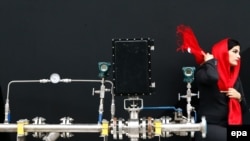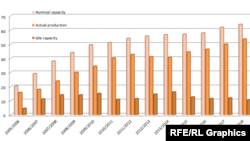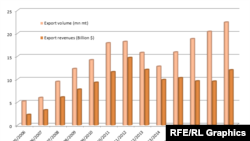Iran’s petrochemical exports increased both in value and volume during the last Iranian fiscal year ending March 20, but the plants continue working with significant idle capacity, though the gap between nominal capacity and actual production has been narrowing.
The National Petrochemical Company (NPC) released its annual report on April 22, saying that export of petrochemical products increased by about 10 percent in volume and 26 percent in value during last fiscal year.
The significant difference between value and volume growth is due to rising oil and petrochemical prices. A 25 percent rise in world oil prices pushed petrochemical prices higher.
The overall production also increased by 6 percent to 53.629 million metric tons (mt) last year. However, the figure is 2 million mt less than the projected plan for the year. On the other hand, about 16 percent of petrochemical production capacity remained idle.
Until 2016, due to nuclear related international sanctions, feedstock shortages, especially methane and ethane had caused a 50 percent idle capacity in Iran’s plants. Methane is a feedstock or raw material for producing methanol and ethane is a feedstock for producing ethylene. Iran overcame this shortage of gas production after sanctions were lifted and in the past two years has been regaining the market share it had lost during sanctions.
Iran’s petrochemical exports have gradually increased and even surpassed pre-sanctions level during March 2017-March 2018 period, but revenues are still below 2012 due to lower oil prices. The oil price plunged from about $105/barrel previously to about $55 in 2017 and now fluctuates at around $74.
During same 12-month period, Iran exported above 22.41 million mt of various petrochemical products worth $12 billion. About a half of these exports went to China, while Turkey, Afghanistan, India and Iraq are Iran’s other major clients. Most of exported products are raw or semi-finished, including liquid petroleum gas (LPG), polyethylene, methanol, urea as well as some value-added products like polymers and plastics.
Petrochemicals constitute about 11 percent of Iran’s total exports, including crude oil, gas, goods, services, which stood at $109.5 from March 2017-March 2018, according to estimates based on statistics from Iran’s customs service and the International Monetary Fund (IMF).
Iran’s total exports increased by about 16%, mostly due rising oil prices and crude oil export volume. The country exported $63.7 billion oil and gas in 2017/2018 fiscal year, about 28% more revenue than the previous year. Its oil exports, including gas condensate stood at 2.5 million barrels per day, about 400,000 b/d more than the previous year. Iran has regained oil markets after nuclear agreement in January 2016 and now produces (4.2 mb/d crude oil and gas condensate) and exports oil with full capacity.
It is expected the country’s total exports revenues to surpass $130 billion in the current fiscal year, due to another jump in oil prices. Now, the Brent oil price stands at about $74/barrel, about $19 more than last year’s average.








